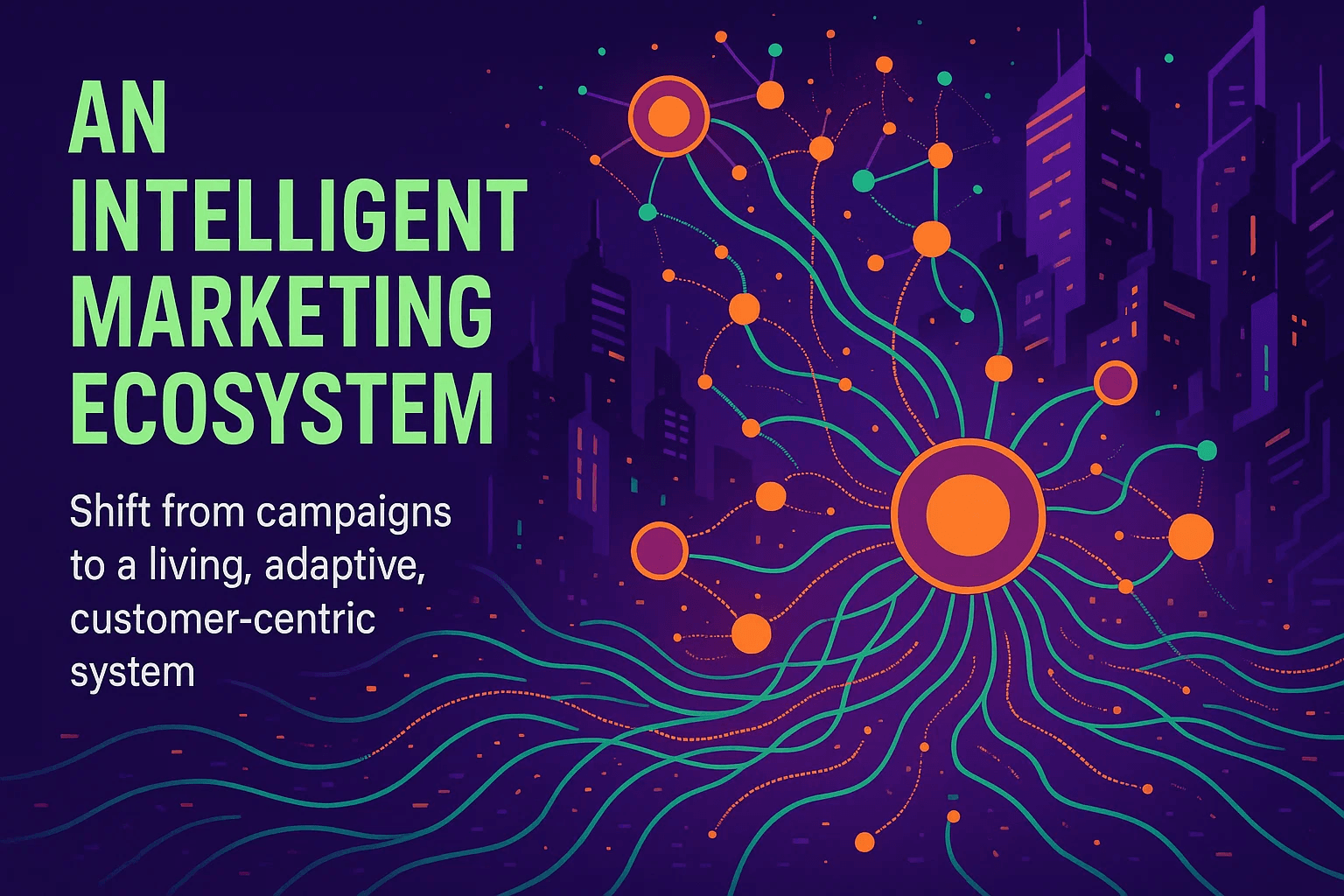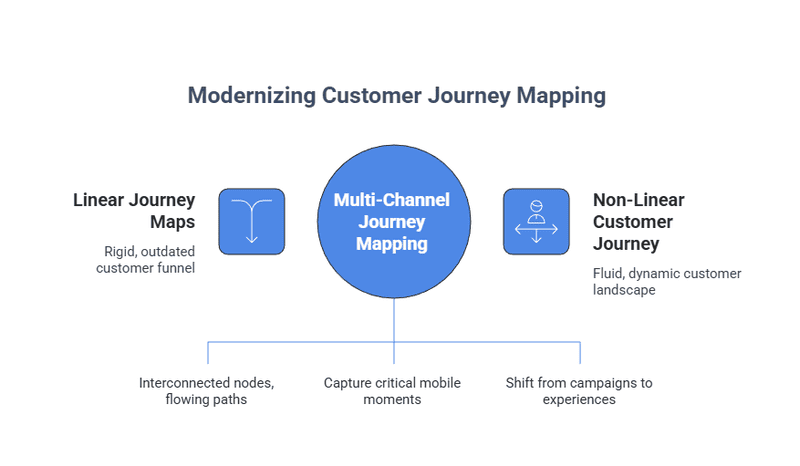Lifecycle Marketing Explained and Why it is Reshaping Customer Journeys

Lifecycle marketing is the discipline of guiding people from first awareness through purchase, use, loyalty, and advocacy with coordinated messages, data, and experiences across channels. It treats every interaction as part of a living relationship, not a one-time conversion.
The legacy approach is a linear funnel that loses its intended goal often. It relies on siloed teams and one-size-fits-all all campaigns that chase new leads while existing customers quietly slip away. It made sense in simpler times, but today it leaves value on the table.
The complexity of modern lifecycle marketing demands more than just a series of campaigns. It requires a fundamentally new approach.
"The old playbooks… they never really quite fit the digital age anyway, did they?"
This article dives deep into a few surprising, even counterintuitive, truths that are redefining how brands connect, convert, and keep customers for life.
Is the Straight Line Lifecycle Marketing Model Truly Obsolete?
For what felt like forever, marketers swore by the linear sales funnel. It presented a neat, predictable journey. From that first spark of awareness all the way to the final purchase. It certainly looked good on a whiteboard. Attract, engage, convert. Simple, clean, and, ultimately, completely inadequate for what is happening today.
Here is the plain truth.
Customers these days simply do not follow a straight line. Their paths are often all over the place. Multichannel, full of twists, turns, and looping back on themselves in ways that would make a neat little funnel diagram look like a tangled ball of yarn.
What is the Myth of the Static Sales Funnel?
We have all held onto the idea that a customer just marches neatly from one defined stage to the next. But think about your own buying habits.
Do you always start at awareness, then smoothly glide to consideration, and then purchase? Hardly ever.
You might stumble upon a product on Instagram, do a quick search on Google, see an ad pop up on a different platform, get distracted, and weeks later, an email reminds you. You compare it with other options, then maybe you buy. And even then, your journey with that brand is just getting started.
Why Does the Old Approach Fail Today?
Models built on rigid, step-by-step stages cannot keep up with how people actually behave. They miss important touchpoints, misattribute impact, and leave gaps where customers drift away feeling ignored or misunderstood. You end up pouring effort into segments that do not reflect reality. That traditional approach assumes a one-way street and fails to account for detours, U-turns, and unexpected pit stops that define how we shop and engage now.
How Do Customers Navigate a Multichannel World?
Customers jump between social media, email, apps, and websites, often at the same time. Sticking to an oversimplified straight line view means you miss critical mobile interactions and real-time context. Many customers will use more than one channel to finish a single transaction and average several channels per journey, which makes linear journey maps misleading and even dangerous for strategy.
This insight forces a fundamental shift. Stop trying to manage campaigns along a path you decided on. Orchestrate complete experiences across a fluid, interconnected landscape. The very framework many of us learned imposes artificial linearity on non linear human behaviour. It is time to let go of the funnel and embrace the network.

Why Personalization is not Skippable in Customer Lifecycle Marketing?
Think back to the last time you got a generic marketing email or saw an irrelevant ad. How did that make you feel?
Probably ignored and annoyed. Now picture a brand that just gets you. It understands your needs, remembers your preferences, and offers exactly what you are looking for when you need it. The difference is stark.
What Do Customers Expect Today?
Consumers will not tolerate one-size-fits-all all messages. They expect brands to understand them as individuals.
Needs, preferences, and current situation. They will walk away if they do not get that recognition. In a world drowning in information and choices, relevance is what makes you stand out.
When you fail to personalize, you are not just missing a chance. You are signaling that the customer is not important enough to know.
What is the Return on Tailored Engagement?
Generic content does not just underperform. It pushes customers away. On the other hand, personalized interactions drive higher engagement and conversion. Many customers will abandon a brand if they do not receive a personalized experience. That is not a preference. It is a warning for brands still relying on broad brush tactics.
How Do We Move from Mass Messages to One on One?
Old broadcast approaches are relics of the pre internet era. Modern lifecycle marketing calls for hyper segmentation and content made for one person. Go beyond simple demographics to truly contextual personalization. Understand where someone is right now, what they have shown interest in, what past interactions reveal, and even their current mood and intent.
This is about business outcomes. Not personalizing is a direct, measurable hit to revenue and loyalty. Personalization is not a nice to have. It is essential for growth.
How Does Agentic AI Move Beyond Basic Automation in Marketing Lifecycle Stages?
For years, marketing automation promised efficiency and scale.
We built workflows. If X happens, then do Y. That is fine for repetitive tasks, but rigid, predefined sequences struggle with the unpredictable nature of customer journeys. Real intelligence needs more than automation. It needs autonomy.
What is the Evolution Beyond Simple Rules?
Imagine navigating a busy city with only a few fixed rules. Stop at red. Go at green. It falls apart when you need alternate routes, parking, or to adapt to your mood and urgency. Traditional automation is like that. It works for predictable paths, but modern customer journeys are complex and constantly changing. Simple rules cannot keep up.
Read more -> Why do you need more context
What is the Impact of Real-Time Decisions from Agentic AI?
Agentic AI orchestration represents the leap forward. Instead of static workflows, autonomous AI agents observe, reason, decide in real time, and act without constant instructions. They understand goals and dynamically figure out the best route. Campaigns adapt on the fly as behavior, preferences, and circumstances change. Multiple specialized agents coordinate, communicate, and collaborate as one unified intelligent system.
How Do Agentic AI Campaigns Become Self-Optimizing?
These agents continuously learn and refine strategies from real time feedback. Campaigns do not just automate. They self-optimize.
An agent may detect hesitation and adjust the next message to add social proof or address objections. This responsiveness enables hyper personalization at a scale and speed impossible with human driven or rule based systems.
The marketer’s role evolves from rule setter to strategist and system steward. Marketing becomes proactive, adaptive, and capable of operating at unprecedented scale. Define destinations. Let intelligent agents find the best routes.
Is Retention Just the Beginning of Unlocking Customer Lifetime Value?
It is cheaper to keep customers than to acquire them. Often many times cheaper. That fact justifies basic retention efforts, but it undersells the exponential potential of truly nurturing customers you already have.
What is the Profit Power of Keeping Customers?
Savings on acquisition are nice, but the real magic is compounding value. Retained customers buy more often, spend more, try new products, are less price sensitive, and are more forgiving of small mistakes. Retention is not just preventing churn. It is a growing asset that increases in value over time.
How Do We Build Advocacy Beyond Repeat Buys?
Success goes beyond repeat purchases. It is about turning satisfied customers into enthusiastic advocates who actively promote your brand. Personal recommendations outweigh ads. Loyalty programs and community building deepen connection and generate outsized returns by transforming passive buyers into active participants in your story. Mature lifecycle programs reliably achieve higher retention and higher customer lifetime value compared to traditional approaches.
Why Focus on Customer Lifetime Value as a Primary Metric?
Prioritizing CLV shifts the perspective from short term transactions to long term relationships. It encourages strategies that deepen engagement, create emotional connection, and build loyalty. When CLV is the north star, your strategy prioritizes experiences that make customers feel valued and understood from first touch to lifelong advocacy.
Retention is the starting point. Advocacy is the multiplier. That is the counter intuitive insight.
Navigating the Future of Lifecycle Marketing with Intelligence
Marketing is undergoing a massive transformation. Linear models and static automation cannot keep up with fluid, multichannel journeys and the demand for ultra-personalization. The shift that separates leaders from laggards is embracing a future where lifecycle marketing is driven by intelligent, adaptive systems, not rigid rules.
We have seen the death of the funnel and the rise of fluid journeys. We have shown why generic messaging is a costly mistake. We have explored how Agentic AI transforms basic automation into intelligent, self optimizing action. And we understand that retention sets the stage for advocacy and compounding CLV.
At Zigment we built an Agentic AI layer for lifecycle success. Our platform leverages Agentic AI Orchestration. Autonomous agents use a comprehensive data layer to understand what is happening with a customer in real time, from mood to intent, and take autonomous, goal-oriented actions across the lifecycle. This moves brands beyond step-by-step processes to constant adaptation and deeper connection with every customer.
Are you ready to transform your marketing from a set of disconnected campaigns into a living, intelligent ecosystem that learns and adapts continuously, delivering exactly what customers need when they need it?
The future of lifecycle marketing strategy is not just about automation. It is about intelligent, adaptive relationships.